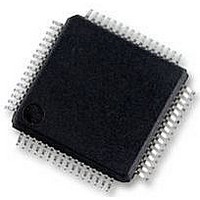P89LPC9401FBD NXP Semiconductors, P89LPC9401FBD Datasheet - Page 27

P89LPC9401FBD
Manufacturer Part Number
P89LPC9401FBD
Description
IC, MCU 8BIT 80C51, LCD DRIVER, SMD
Manufacturer
NXP Semiconductors
Datasheet
1.P89LPC9401FBD551.pdf
(59 pages)
Specifications of P89LPC9401FBD
Controller Family/series
(8051) 8052
Core Size
8bit
No. Of I/o's
23
Program Memory Size
8KB
Ram Memory Size
256Byte
Cpu Speed
18MHz
Oscillator Type
External, Internal
No. Of Timers
4
No.
RoHS Compliant
Available stocks
Company
Part Number
Manufacturer
Quantity
Price
Part Number:
P89LPC9401FBD
Manufacturer:
NXP/恩智浦
Quantity:
20 000
Company:
Part Number:
P89LPC9401FBD,551
Manufacturer:
NXP Semiconductors
Quantity:
10 000
Company:
Part Number:
P89LPC9401FBD,557
Manufacturer:
NXP Semiconductors
Quantity:
10 000
Company:
Part Number:
P89LPC9401FBDЈ¬551
Manufacturer:
NXP
Quantity:
3 048
Philips Semiconductors
P89LPC9401_1
Preliminary data sheet
7.19.4 Mode 3
7.19.5 Baud rate generator and selection
7.19.6 Framing error
7.19.7 Break detect
7.19.8 Double buffering
received, the 9
bit is not saved. The baud rate is programmable to either
frequency, as determined by the SMOD1 bit in PCON.
11 bits are transmitted (through TXD) or received (through RXD): a start bit (logic 0), 8
data bits (LSB first), a programmable 9
the same as Mode 2 in all respects except baud rate. The baud rate in Mode 3 is variable
and is determined by the Timer 1 overflow rate or the Baud Rate Generator (described in
Section 7.19.5 “Baud rate generator and
The P89LPC9401 enhanced UART has an independent Baud Rate Generator. The baud
rate is determined by a baud rate preprogrammed into the BRGR1 and BRGR0 SFRs
which together form a 16-bit baud rate divisor value that works in a similar manner as
Timer 1 but is much more accurate. If the baud rate generator is used, Timer 1 can be
used for other timing functions.
The UART can use either Timer 1 or the baud rate generator output (see
that Timer T1 is further divided by 2 if the SMOD1 bit (PCON.7) is cleared. The
independent Baud Rate Generator uses OSCCLK.
Framing error is reported in the status register (SSTAT). In addition, if SMOD0 (PCON.6)
is logic 1, framing errors can be made available in SCON.7 respectively. If SMOD0 is
logic 0, SCON.7 is SM0. It is recommended that SM0 and SM1 (SCON.7:6) are set up
when SMOD0 is logic 0.
Break detect is reported in the status register (SSTAT). A break is detected when
11 consecutive bits are sensed LOW. The break detect can be used to reset the device
and force the device into ISP mode.
The UART has a transmit double buffer that allows buffering of the next character to be
written to SBUF while the first character is being transmitted. Double buffering allows
transmission of a string of characters with only one stop bit between any two characters,
as long as the next character is written between the start bit and the stop bit of the
previous character.
Fig 8. Baud rate sources for UART (Modes 1, 3)
baud rate generator
timer 1 overflow
(CCLK-based)
(PCLK-based)
th
8-bit two-clock 80C51 microcontroller with 32 segment
data bit goes into RB8 in Special Function Register SCON, while the stop
Rev. 01 — 5 September 2005
2
SMOD1 = 1
SMOD1 = 0
th
data bit, and a stop bit (logic 1). In fact, Mode 3 is
selection”).
SBRGS = 0
SBRGS = 1
1
© Koninklijke Philips Electronics N.V. 2005. All rights reserved.
16
or
P89LPC9401
baud rate modes 1 and 3
1
32
of the CPU clock
Figure
002aaa897
4 LCD driver
8). Note
27 of 59
















